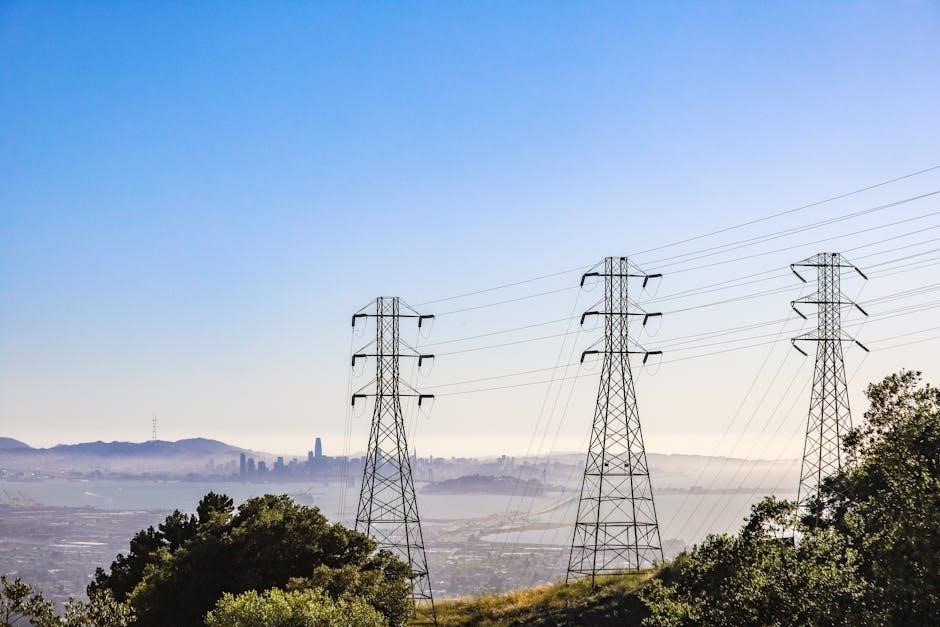
california manual transmission
Manual transmissions in California hold a unique cultural and practical significance, blending driving enthusiasts’ passion with the state’s diverse terrain and traffic challenges. Known for their precision and control, manual cars have long been a staple for drivers seeking an authentic driving experience. Despite declining popularity nationwide, California’s car culture continues to celebrate manual transmissions, especially among racing and performance communities. The state’s iconic roads and scenic landscapes make it a haven for those who appreciate the art of shifting gears. However, urban congestion and steep hills present unique challenges, testing even the most skilled drivers. As the automotive landscape evolves, manual transmissions remain a beloved niche, symbolizing a connection to the past while adapting to modern demands.
1.1 Overview of Manual Transmission Vehicles
Manual transmission vehicles, equipped with a gearbox requiring manual gear shifting, remain popular in California among driving enthusiasts. These cars offer precise control and a direct connection to the driving experience. While their popularity has declined with the rise of automatics, manuals are still prized for their performance, fuel efficiency, and lower purchase costs. However, California’s heavy traffic and hilly terrain present challenges, making manual transmissions less practical for some drivers.
1.2 Popularity of Manual Transmissions in California
Manual transmissions have historically been popular in California, especially among car enthusiasts and performance drivers. However, their popularity has declined significantly over the past decade. According to recent data, only a small percentage of new cars sold in California feature manual transmissions. Despite this, manuals remain a niche favorite for their driving engagement and fuel efficiency. The state’s car culture and scenic routes contribute to their enduring appeal, particularly in urban areas where driving experiences are cherished.

History of Manual Transmissions in California
Manual transmissions have a rich history in California, dating back to the early 20th century. Their popularity grew with the rise of performance cars and racing culture, becoming a staple in the state’s automotive identity. The golden age of manual transmissions in the 1960s and 1970s solidified their place in California’s car enthusiasts’ hearts, despite declining popularity in recent decades.
2.1 Early Adoption of Manual Transmissions
Manual transmissions first gained traction in California during the early 20th century, appealing to drivers seeking control and efficiency. The state’s growing car culture and the rise of performance vehicles in the 1920s and 1930s further popularized manual gearboxes. Racing enthusiasts embraced manual transmissions for their precision, establishing a legacy that resonated with California’s automotive identity. This early adoption laid the groundwork for a passionate community of manual transmission advocates.
2.2 The Golden Age of Manual Transmission Cars
The 1960s and 1970s marked the golden era for manual transmissions in California, driven by iconic models like the Ford Mustang and Chevrolet Corvette. These cars became symbols of freedom and performance, capturing the hearts of driving enthusiasts. Racing circuits and coastal highways provided the perfect backdrop for manual transmission cars to shine, fostering a culture that celebrated both speed and precision. This period solidified California’s reputation as a hub for manual transmission enthusiasts.
2.3 Evolution of Manual Transmissions Over the Years
Manual transmissions have evolved significantly, offering smoother shifts and better efficiency. Advances in synchronizer design and gear materials have improved durability and driver comfort. Modern manuals often feature lighter components and optimized gearing for enhanced performance. Despite the rise of automatics, these innovations have kept manual transmissions relevant, especially among enthusiasts in California who value the connection to the driving experience they provide.

Benefits of Manual Transmissions in California
Manual transmissions in California offer improved fuel efficiency, reducing both costs and environmental impact. They provide better control and a more engaging driving experience, especially on diverse terrain.
3.1 Fuel Efficiency and Cost Savings
Manual transmissions in California are known for their fuel efficiency, offering better mileage compared to automatics, especially in urban and mountainous driving conditions. This leads to significant cost savings over time, as drivers spend less on fuel. Additionally, manual transmissions typically require less expensive maintenance and repairs, making them a financially appealing option for Californians seeking both performance and practicality.
3;2 Better Control and Driving Experience
Manual transmissions provide Californians with enhanced control over their vehicles, allowing precise acceleration and deceleration. This connection to the car fosters a more engaging and rewarding driving experience, particularly on winding roads and mountainous terrains. The ability to manually shift gears enables drivers to better adapt to changing conditions, making it a preferred choice for those who value driver involvement and the joy of driving.
3.4 Environmental Impact Reduction
Manual transmissions often contribute to lower emissions and improved fuel efficiency, which is crucial in eco-conscious California. By optimizing gear usage, drivers can reduce fuel consumption, thereby decreasing carbon footprints. This makes manual vehicles an environmentally friendly option for those prioritizing sustainability without compromising on performance. California’s focus on green initiatives aligns with the benefits of manual transmissions, offering a practical solution for reducing environmental impact while maintaining driving enjoyment.

Challenges of Manual Transmissions in California
Manual transmissions in California face challenges like heavy traffic, steep hills, and declining popularity among younger drivers. These factors test driver patience and skill, making automatics more appealing for many. Additionally, urban congestion and mountainous terrain require frequent gear shifts, adding to the difficulty. Despite these hurdles, enthusiasts continue to appreciate the unique driving experience manuals provide.
4.1 Traffic and Congestion Issues
California’s notorious traffic congestion poses significant challenges for manual transmission drivers. Frequent stopping and starting in heavy traffic can be frustrating and physically demanding. Drivers must constantly shift gears, which can lead to fatigue, especially in urban areas like Los Angeles and San Francisco. The stop-and-go conditions make automatic transmissions more appealing for many commuters. However, enthusiasts argue that manuals offer better control, even in such conditions, fostering a deeper connection to the driving experience.
4.2 Steep Hills and Mountainous Terrain
California’s steep hills and mountainous terrain present unique challenges for manual transmission drivers. Navigating inclines requires precise gear shifting to maintain control and avoid rollback. The physical and mental demands increase, as drivers must constantly adjust speed and torque. These conditions can lead to increased wear on the clutch and transmission, making regular maintenance crucial. Despite the challenges, many enthusiasts embrace the thrill of mastering such terrains with a manual gearbox.
4.3 Declining Popularity Among Young Drivers
Manual transmissions are losing appeal among California’s younger generation, influenced by the convenience of automatic and CVT options. Many new drivers prioritize ease of use, especially in heavy traffic, over the engagement of manual shifting. Additionally, the rise of electric vehicles, which typically don’t offer manual transmissions, further accelerates this trend. This shift reflects changing preferences and lifestyles, potentially impacting the long-term viability of manual transmissions in the state.

Maintenance and Care for Manual Transmissions
Regular maintenance is crucial for manual transmissions, including clutch inspections, fluid checks, and timely repairs to ensure smooth operation and longevity in California’s driving conditions.
5.1 Regular Clutch Maintenance
Regular clutch maintenance is essential for manual transmissions in California; Inspect the clutch pedal, master and slave cylinders, and hydraulic fluid levels regularly. Signs of wear, such as slippage or noise, should be addressed promptly to avoid costly repairs. Replacing worn clutch components early prevents further damage. Transmission fluid checks are also crucial for smooth operation. Neglecting maintenance can lead to reduced performance and expensive fixes, especially in California’s stop-and-go traffic and hilly terrain.
5.2 Transmission Fluid Check and Replacement
Regular transmission fluid checks are vital for maintaining manual transmissions in California. Fluid levels should be inspected every 6,000 to 12,000 miles; Dirty or low fluid can cause overheating and wear. Replacement intervals vary by manufacturer, typically every 30,000 to 60,000 miles. Using the correct type of fluid is crucial for optimal performance. Neglecting fluid maintenance can lead to premature wear and costly repairs, particularly in California’s demanding driving conditions.
5.3 Common Repair Costs in California
Manual transmission repairs in California can vary widely, with clutch replacements often costing between $500 and $1,500, depending on labor rates and parts quality. Transmission rebuilds typically range from $1,000 to $3,000, influenced by the vehicle’s make and model. Additionally, factors like heavy traffic and mountainous terrain can accelerate wear, leading to more frequent repairs. Labor costs in urban areas like Los Angeles and San Francisco tend to be higher, increasing overall expenses.

The Future of Manual Transmissions in California
Manual transmissions face a uncertain future in California, with rising competition from automatics and EVs, yet enthusiasts remain loyal, ensuring a niche presence in the automotive landscape.
6.1 Rise of Automatic and CVT Transmissions
The rise of automatic and CVT transmissions in California is driven by increasing traffic congestion and the desire for convenience. Automatics offer smoother acceleration in stop-and-go traffic, while CVTs optimize fuel efficiency. These transmissions are particularly appealing in urban areas like Los Angeles and San Francisco, where heavy traffic and hilly terrain make manual shifting less practical. As a result, fewer new cars are being sold with manual options, reflecting a broader shift toward ease of driving in California’s challenging conditions.
6.2 Impact of Electric Vehicles on Manual Transmissions
Electric vehicles (EVs) are increasingly impacting manual transmissions in California by reducing demand for traditional geared systems. EVs typically use single-speed or multi-speed automatic transmissions, eliminating the need for manual shifting. As California leads the nation in EV adoption, the shift toward electric powertrains is further marginalizing manual transmissions, pushing them into niche markets for enthusiasts. This trend is accelerating the decline of manual transmissions in the state’s automotive landscape.
6.3 Niche Market for Manual Transmission Enthusiasts
Manual transmissions in California are becoming a niche market, appealing primarily to driving enthusiasts who value precision, control, and the joy of shifting gears. This dedicated group, often involved in racing and performance culture, keeps the tradition alive. The state’s vibrant car culture, with its emphasis on customization and heritage, ensures that manual transmissions remain a cherished choice for those passionate about the driving experience.
Learning to Drive a Manual Transmission in California
Learning to drive a manual transmission in California requires patience and practice, especially in heavy traffic and hilly terrains. Beginners often start in empty parking lots to master clutch control and smooth shifting. Driving schools and experienced instructors can provide personalized guidance, helping new drivers build confidence and skill behind the wheel.
7.1 Best Practices for Beginners
Beginners learning to drive a manual transmission in California should start in safe, open spaces like empty parking lots to practice clutch control and shifting without pressure. Focus on feathering the clutch and coordinating accelerator input for smooth starts. Practice on flat ground before tackling hills, where manual transmissions require precise gear management. Using online tutorials or enlisting a patient instructor can accelerate the learning process and reduce frustration.
7.2 Recommended Cars for Learning Manual Transmission
For beginners in California, compact sedans like the Honda Civic, Toyota Corolla, or Mazda3 are ideal for learning manual transmission due to their smooth clutches and forgiving gearboxes. Sporty options like the Subaru BRZ or Ford Fiesta ST also offer excellent control and responsiveness. These models provide a balanced mix of ease and engagement, making the learning process enjoyable and effective for new drivers mastering the art of shifting gears.
7.3 Driving Schools Specializing in Manual Transmissions
Driving schools in California, such as the California Driving Academy and Manual Mastery School, offer specialized programs for learning manual transmissions. These schools provide expert instructors and tailored lessons to help novices master clutch control, gear shifting, and navigating California’s unique terrain. Their focused approach ensures students gain confidence and proficiency, making them well-prepared for the challenges of driving a manual transmission vehicle in the state’s diverse conditions.

Regional Differences in Manual Transmission Usage
Regional differences in California’s manual transmission usage vary between urban and rural areas, with preferences influenced by traffic, terrain, and cultural driving habits.
8.1 Urban vs. Rural Areas in California
Urban areas in California, like Los Angeles and San Francisco, often see lower manual transmission usage due to heavy traffic and congestion, making automatics more practical. In contrast, rural regions with open roads and scenic routes tend to favor manual transmissions for better control and driving enjoyment. This divide reflects differing lifestyles, with urban drivers prioritizing convenience and rural drivers valuing the connection to the road that manuals provide.
8.2 Coastal vs. Inland Regions
Coastal regions of California, known for their scenic routes and winding roads, attract enthusiasts who prefer manual transmissions for a more engaging drive. Inland areas, with their varied terrain and higher elevations, also see a preference for manuals, particularly among outdoor enthusiasts and off-road drivers. The coastal routes offer a smooth, predictable driving experience, while inland regions provide a more challenging yet rewarding terrain for manual transmission drivers to master.
8.3 Cultural Influences on Driving Preferences
California’s diverse culture significantly influences driving preferences, with a strong emphasis on car enthusiasts and performance vehicles. The state’s vibrant import and classic car scenes often favor manual transmissions for their precision and connection to the driving experience. Cities like Los Angeles and San Francisco, with their unique driving styles, further shape these preferences, blending practicality with a passion for automotive heritage and innovation.

The Used Car Market for Manual Transmissions in California
California’s used car market for manual transmissions remains vibrant, driven by enthusiast demand for classic and performance vehicles. Popular models like JDM imports and European sports cars retain strong value, while pricing trends reflect a steady rise due to limited supply and growing nostalgia for manual driving experiences.
9.1 Popular Models Among Enthusiasts
California enthusiasts favor iconic manual transmission models like the Honda Civic Type R, Mazda RX-7, and BMW M3 for their performance and heritage. JDM imports, such as the Nissan Skyline and Toyota Supra, are highly sought after, while classic cars like the Ford Mustang and Chevrolet Camaro remain timeless favorites. These vehicles often retain strong resale value due to their enduring appeal and limited supply in the used market.
9.2 Pricing Trends for Manual Transmission Vehicles
Pricing for manual transmission vehicles in California varies widely, with classic and performance models often commanding premium prices due to their rarity and enthusiast demand; Economy-oriented manual cars tend to be more affordable, while high-end or limited-production models see significant appreciation. As manual transmissions become less common, their value in the used market remains steady, appealing to collectors and driving purists seeking unique experiences behind the wheel.
9.3 Tips for Buying a Used Manual Transmission Car
When buying a used manual transmission car in California, prioritize a thorough inspection of the clutch and gearbox for wear. Check the transmission fluid for condition and level. Ensure the clutch engages smoothly without slippage. Test drive on varied terrain to assess performance. Review maintenance records to confirm regular servicing. Consider purchasing from reputable dealers or private sellers who are knowledgeable about manual transmissions to ensure reliability and value.

Racing and Performance Culture in California
California’s racing and performance culture thrives, with manual transmissions at its heart. From track days at Laguna Seca to street racing, enthusiasts embrace the precision and control manuals offer, often modifying cars for peak performance. The state’s vibrant car culture fosters a community passionate about speed, innovation, and the art of driving.
10.1 Manual Transmissions in Racing Events
Manual transmissions dominate California’s racing events, offering precise control and faster shifts essential for competitive edge. Tracks like Laguna Seca host enthusiasts who rely on manual gearboxes for optimal performance. The state’s vibrant racing culture celebrates the skill and connection manual transmissions provide, making them a cornerstone of motorsports in California’s automotive scene.
10.2 Aftermarket Modifications for Performance
In California, enthusiasts often modify manual transmissions with aftermarket parts to enhance performance. Lightweight flywheels and high-performance clutches improve acceleration and responsiveness. Short-throw shifters reduce shifting time, while upgraded gearsets optimize power delivery. These modifications are popular in the state’s vibrant car culture, particularly among racers and tuners seeking to maximize their vehicles’ potential on both the street and track.
10.3 The Role of Manual Transmissions in Car Culture
Manual transmissions are a cornerstone of California’s car culture, symbolizing skill and connection to the driving experience. They are celebrated in racing, car shows, and enthusiast communities. The state’s iconic roads and performance-driven lifestyle have cemented their status as a symbol of automotive passion. Manual transmissions embody the spirit of driving purism, fostering a sense of community among drivers who value precision and control.

How to Drive a Manual Transmission in California’s Conditions
Mastering manual transmissions in California requires adapting to diverse terrain and traffic. Practice hill starts, use the correct gear for inclines, and maintain steady clutch control in congestion. Smooth shifts and situational awareness are key for tackling the state’s iconic roads and long drives efficiently.
11.1 Mastering Hills and Inclines
Mastering hills and inclines with a manual transmission in California requires skill and precision. Use the handbrake to stabilize the vehicle on steep uphill starts. Shift into a lower gear before ascending to maintain control and prevent rolling backward. Feather the clutch gently to avoid jerky movements. On descents, downshift to use engine braking, reducing wear on brakes. Practice on smaller inclines to build confidence and smooth transitions.
11.2 Navigating Heavy Traffic with a Manual Transmission
Navigating heavy traffic with a manual transmission in California demands patience and skill. Frequent stopping and starting can be tiring, but smooth clutch engagement and gradual acceleration help maintain control. Use low gears to avoid stalling in stop-and-go situations. Keep a safe distance to anticipate stops and minimize sudden shifts. Practice smooth transitions to reduce wear on the clutch and transmission. Stay calm and focused to manage the stress of heavy traffic.
11.3 Tackling Long Road Trips in California
Long road trips in California with a manual transmission offer a unique driving experience. The state’s diverse terrains, from coastal highways to mountainous routes, allow drivers to fully engage with their vehicle. Manual transmissions provide better fuel efficiency and control, essential for extended journeys. The ability to shift gears smoothly connects drivers to the road, enhancing the enjoyment of California’s scenic beauty. This makes every trip memorable and rewarding.
Manual transmissions remain a beloved niche in California, despite rising competition from electric vehicles and automatics. Their unique driving experience continues to captivate enthusiasts, ensuring their enduring appeal.
12.1 Final Thoughts on Manual Transmissions
Manual transmissions in California symbolize a blend of tradition, driving passion, and practicality. While their popularity has waned with advancing technology, they remain cherished by enthusiasts for their tactile connection to the road. The state’s diverse terrain and vibrant car culture ensure that manual transmissions continue to hold a special place, even as the automotive world evolves toward automation and electric vehicles.
12.2 The Future Outlook for Manual Transmissions in California
Manual transmissions in California face a mixed future, with declining popularity amid rising automatic and electric vehicle adoption. While they may become niche, enthusiasts will continue to cherish them for their unique driving experience. The state’s car culture and scenic roads ensure manuals remain relevant, even as technological advancements shift the automotive landscape. Their future lies in a dedicated community that values tradition and precision over convenience.
Leave a Reply
You must be logged in to post a comment.